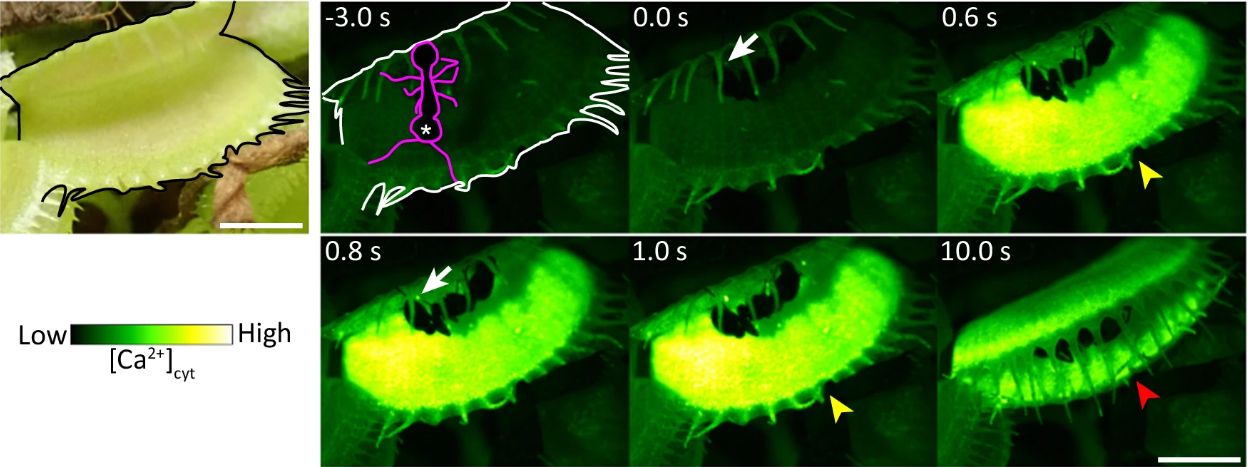Research into carnivorous plants has recently unveiled critical insights into how the Venus flytrap (Dionaea muscipula) detects prey. A study led by Hiraku Suda and colleagues, published in Nature Communications, identifies a mechanosensor, known as DmMSL10, as integral to the plant’s rapid response mechanism.
The Venus flytrap employs a sophisticated system that relies on sensory hairs lining its leaves. These hairs respond to specific stimuli, enabling the plant to capture unsuspecting insects. While it was previously understood that calcium threshold signals play a role in this process, the exact mechanism remained unclear until now.
Understanding the Mechanism
The recent study highlights how the absence of the DmMSL10 channel affects the plant’s response to touch. Researchers created a variant of the Venus flytrap where this stretch-activated chloride ion (Cl–) channel was removed. Observations revealed that while both the wild-type and knockout plants activated calcium signals upon mechanical stimulation, the rate of action potential generation was significantly lower in the knockout variant.
In practical terms, this means that the wild-type Venus flytrap continued to generate action potentials even after the initial mechanical stimulation ceased. In contrast, the knockout variant was unable to effectively process light touches, demonstrating the crucial role of DmMSL10 in detecting prey.
Experimental Findings with Ants
To further illustrate the importance of this mechanosensor, the research team conducted experiments allowing ants to wander on the leaves of both wild-type and knockout plants. The wild-type Venus flytrap successfully caught the first ant to step onto its leaf. In stark contrast, the knockout plant did not react, as four successive ants failed to trigger the necessary calcium signal to close the leaf.
These findings provide significant insight into how the Venus flytrap and similar species can produce long-range calcium signals, essential for capturing protein-rich prey. The implications of this research extend beyond plants, offering a possible parallel to similar mechanisms found in animal biology.
As scientists continue to explore these unique adaptations, further studies are anticipated to uncover how such mechanisms evolved in the plant kingdom, potentially enriching our understanding of both plant and animal interactions in the ecosystem.







































































